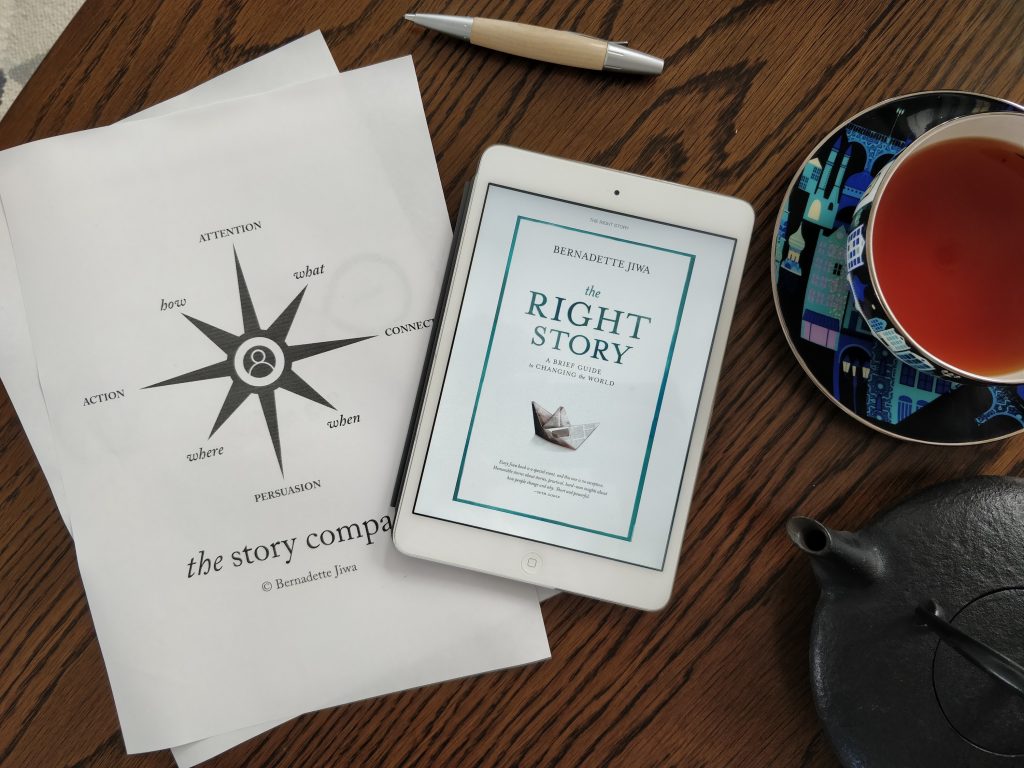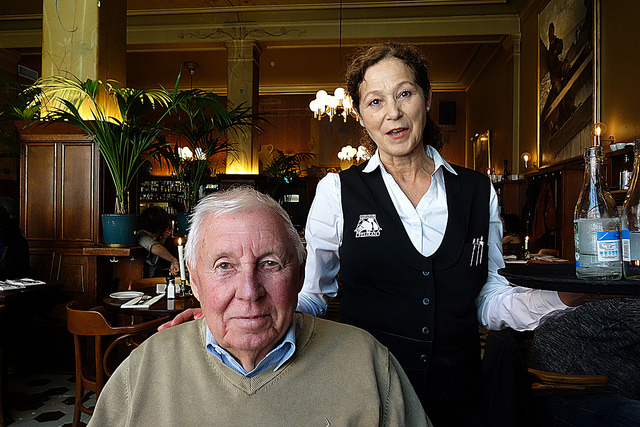Unlock the Magic in Your Story Now
Get the Free 20 questions to Ask Before Launching Your Idea workbook when you sign up for occasional updates.
Get the Free 20 questions to Ask Before Launching Your Idea workbook when you sign up for occasional updates.
Articles filed in: Strategy
The Thinking, Feeling Customer

One of my friends brushes his teeth while he’s showering in the morning to save time. How much time, if any, is he saving? Probably not much. But that’s the wrong question to ask. It doesn’t matter how much time he’s saving. What matters is he feels like he’s saving time, so his morning routine persists.
As people with ideas and products and services to sell, we spend a lot of time trying to change people’s minds by appealing to logic. The people we’re trying to reach are not rational actors, and neither are we. We often choose to do what feels good above what makes sense. The ideas that spread, the products that sell and the services that get used, appeal to the thinking, feeling customer. And so should you.
Image by Carlo Villarica
Get To The Heart Of The Matter

My granny had a chronic dry skin problem all her life. She tried every moisturiser on the planet. She stopped using soap and bathed in lotions the doctor prescribed for her. Nothing worked. No matter what the doctor prescribed or what granny applied to her skin it still cracked and flaked.
It’s obvious now looking back, that neither my granny nor her doctor got to the heart of the problem. He didn’t know what was causing or contributing to the condition. He didn’t know that my granny never drank water—only tea. Twenty cups a day. He didn’t know that she had a poor diet, devoid of fresh fruit and vegetables and healthy fats. He tried to fix the problem by treating the symptoms, instead of the cause.
We all do this at some point in our lives. We don’t get to the heart of the matter and end up with an ineffective solution. We waste precious resources, time and energy on tactics that don’t help us to create forward motion or get to where we want to go. We reason that there’s no harm in trying something that might not work while forgetting to account for the opportunity cost, that isn’t just wasted time or money—it’s wasted momentum.
Getting to the heart of the matter, whether that’s with your health goals or your business challenges, is harder than finding a quick-fix solution to treat the symptoms. But it’s worth the effort.
Introducing The Story Compass
filed in Marketing, Storytelling, Strategy

My new book, The Right Story publishes today. I can’t wait to hear how you’re using the new tools in the book to help you craft your messaging and engage more deeply with your customers. The Story Compass is one of those tools in the book. It’s designed to facilitate powerful, purposeful storytelling. It will help you to clarify what’s driving your story at any given time, and to consider how best to deliver your message as a result.

Using The Story Compass, together with the accompanying questions in the book will give you a better understanding of the change you’re trying to create, for whom, and help you tell the right story to achieve it. It enables you to define your story strategy and design your tactics. Before you begin to craft your message, you need to decide if the purpose of that message is to get attention or to deepen trust and connection. Is it to empower people to be open to persuasion or to act?
Once you know why you’re telling the story you can begin to work on how to best tell it. The tactics you use to get your message across are the how of your story—the means by which you carry out your strategy. What you say and do, when and where, has an impact on where you end up. A message that resonates relies on the communicator discerning the most e ective way to deliver it.
The clarity with which you show up, as only you can, changes how the story is told and with whom it resonates. How you go about your work can have just as much impact on your results as the work itself.
The Right Story is my invitation to you to think about the impact of the work you’re here to do and the skin you want to get under, the hearts you want to touch and the lives you want to make better.
Thanks for giving me a reason to write it.
Be A Powerful And Purposeful Storyteller
filed in Marketing, Storytelling, Strategy

*The following post is an extract from my new book The Right Story.*
Throughout history, the technology of the day has always influenced how its users communicate and share ideas. How we think about spreading ideas is shaped by the resources available to us. How we connect and persuade is affected by the way we choose to deliver the message. When we’re face-to-face, we gesture and embellish. When we’re tweeting or texting, we use emoji and cut to the chase.
Our behaviour isn’t the only thing that changed over time. A subtle change in our mindset simultaneously took place too. We began to focus less on the drivers of change—the reasons behind those interactions we initiated. And we started to prioritise the immediate benefit we wanted to get from the interaction. We neglected to build trust before sharing the message and instead obsessed over just delivering it. The result is that we have changed from purposeful storytellers, who care about how the audience or user feels, to pragmatic communicators who prioritise ‘getting the word out there’ so we can persuade people to act.
The problem with just homing in on the mode of delivery is that technology is constantly changing. No sooner have you conquered the Facebook marketing landscape than the algorithm changes. One minute it seems that print is dead; then suddenly the tangible is having a revival. The answer then, is not to get too preoccupied with adapting your message to suit the changing technology of the day, but to focus on what’s unchanging about people instead.
Where should your story begin? There’s a tendency to dedicate the bulk of our resources—time, energy and money—to the delivery of our messages. But effective storytelling happens in two parts. Purposeful storytelling is a combination strategy and tactics —drivers and delivery.

You must define your strategy before you begin designing and deploying tactics. You have to know who you want to influence and why—to be clear about what’s driving your story, before you consider what, where, when and how you’re going to deliver the message to those people you hope to reach and change. Starting with the why is important because if we focus only on the how, the delivery, then our stories fall flat, and we are less likely to create the change we hope to make.
We’ve come to a crossroads in sales and marketing. We have two choices. We can be fearfully reactive to the marketplace or bravely responsive to our customers. We can carry on doing what we’ve been doing since the golden days of advertising and the Madison Avenue era. We can spend more money interrupting more people in physical and digital places—with the intention of finding the quickest route from getting everyone’s attention to making a tiny percentage of people act. Or we can find a group of people we want to serve, people with a need or a desire we care about fulfilling, and earn their trust and loyalty over time. We must choose whether we want to make weak ties by going broad and shallow, or strong ties by going narrow and deep. We need to decide if we want to be the loudest or most resonant, most visible or most memorable. We can’t be both.
Image by Garry Knight
Is Your Marketing Working?
filed in Marketing, Storytelling, Strategy

Last week I visited the local camping store to buy a gift card. As I was paying at the point of sale, a one question survey popped up on the keypad. The store manager asked if I’d seen their TV ad. When I said I hadn’t, she hit ‘no’ on the survey. I couldn’t resist asking her what percentage of people said ‘yes’. In her store, the answer was zero. In the time they’d been doing this survey the store manager hadn’t encountered a single paying customer who had seen the company’s TV ad. Not one.
Their marketing (or I should say, their advertising) isn’t working. And yet, the store was full of people buying tents for their camping trips down south, and warm jackets for their overseas skiing trips. The TV adverts are seen by hundreds of thousands of people. The problem is that those ads aren’t being seen by the right people. The camping company has discovered that more reach doesn’t equate to more resonance or more of the right customers.
Making more people aware that your product or service exists doesn’t mean your product or service will be more successful. It’s not enough to tell your story. You need to tell the right story to the right people at the right time.
The tools in my new book, The Right Story, now available for pre-order will show you how.
Image by Thomas Rousing
The Right Story
filed in Marketing, Storytelling, Strategy

What makes some bad ideas successful, and why do many good ideas fail? It turns out that there’s no such thing as a bad idea or a good idea. There is only the wrong story or the right story. The right story is one that is trusted. It is believed because it is told by the right person, for the right reasons, in the right way, at the right time, to the right people.
The success or failure of our ideas depends on us telling the right story. We can only do that by being clear about the change we want to create, and why—and then bringing enough of the right people with us on the journey. It’s up to us, the changemakers of today and tomorrow, to galvanise those people we hope to bring on the journey with us.
That’s why I wrote my new book, The Right Story. Not just to help you to persuade people or get better at delivering your message. But also to give you the tools to help you understand what should drive that message.
The Right Story will help you to resonate with your right people and become a more purposeful and powerful communicator. You’re the reason I wrote it. You can preorder your Kindle copy today—paperback copies will be available next week. I hope it helps you and your good ideas to succeed this year.
Be Ambitious

In our culture ambition is both celebrated and frowned upon—not always in equal measure. Ambition is encouraged and rewarded, but only to a point.
Perhaps it’s not ambition itself that’s the problem, but rather, our narrow definition of it? We aspire mostly to the ambition of accumulation. We want to be more and have more. More accomplished or influential, more wealthy or successful. Preferably all four. But if we’re asked to define success, we’re not always sure what it means to us.
If we’re going to find our calling, do meaningful work and live happy, fulfilled lives we need a more ambitious definition of success.
Be ambitious about the power and potential of your ideas. Be ambitious about the depth of the change you want to create. Be ambitious for the people you love and those you serve. Be ambitious for the people in your community who you’ve never met. Be ambitious for the children in your country who have yet to be born. Be an ambitious advocate for those who have lost hope.
Reflect on what you want. Then go after it with your head held high. And encourage and help others to do the same.
Image by Garry Knight
Design For The Outcome You Want
filed in Strategy

When a once beloved brand under new management, repeatedly relies on flash sales and deep discounts to boost sales, it’s obvious that the organisation’s goal is to massage the numbers on the next quarter’s balance sheet. The leadership team are designing the business for the outcome they want—short-term growth, on paper. A short-term strategy doesn’t always take long-term effects into account. Discounting, in this case, sets off a chain reaction.
Customers who pay full price one day, only to see products discounted the next, are now educated to buy when products are discounted. There will always be another sale right around the corner, after all. So the brand loses its efficacy because the story the customers believe changes. The meaning customers once attached to the brand gradually erodes until the irreplaceable brand becomes an interchangeable commodity.
Every decision we make has a knock on effect. Today’s decisions impact tomorrow’s outcomes. We need to plan for then and now.
Image by Milo Baumgartner
The Power Of What Goes Unnoticed
filed in Marketing, Storytelling, Strategy

The two sign installers stand back to assess their work before finishing the job. But something isn’t right. A couple of the large adhesive letters they have applied to the storefront window are crooked, and one of the men calls this out. His colleague agrees. The sign is definitely looking a little wonky. But, he reasons, if the store owners don’t care about fonts, they aren’t going to notice this.
‘Let’s just crack on with it,’ he says.
And they do. But something else is not right—something that skips his attention, as he turns to get the rest of the equipment from their van. His colleague’s smile slips, his shoulders slump. Even though he agrees that the store owner might not notice the sign isn’t perfect. He knows. And that knowing sucks all the joy out of the work.
We are not only showing up for customers. We are showing up to ourselves—to do work we’re proud of, even when no one is watching.
Image by Peter B
